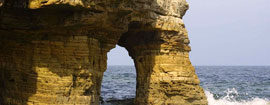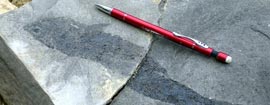Geodiversity
The special landscape of the area, with its distinctive flora and fauna and interesting social and economic history, reflects events and processes that shaped the area many millions of years ago.
The rocks which underlie most of the area were formed in ancient deserts, warm seas and vast, low-lying, forest-covered tropical swamps. It was beneath the Zechstein Sea, an early North Sea, which the most distinctive rocks of the area – a complex succession of limestones began to form.
Many of these are weird and wonderful formations such as ‘Cannon Ball’ rock, consisting of masses of spherical concretions which vary in size from a small pea to a small football. Spectacular sections of this rock are exposed at Marsden Old Quarry LNR and on the coast at Hendon, south of Sunderland.
In recognition of the national and international importance of the geodiversity of the area, from the fossils, minerals and rocks through to the geological process that are evident in many of the natural exposures, cliffs and quarries, many sites have been designated as geological Sites of Scientific Interest (SSSI) including Blackhall Rocks, Ford Quarry, Fulwell Hills Quarry and the coastal cliffs at Trow Point to Whitburn Steel.
Limestone Landscsapes – Geodiversity Audit for the Durham Magnesian Limestone Plateau can be downloaded from the publications pages.





